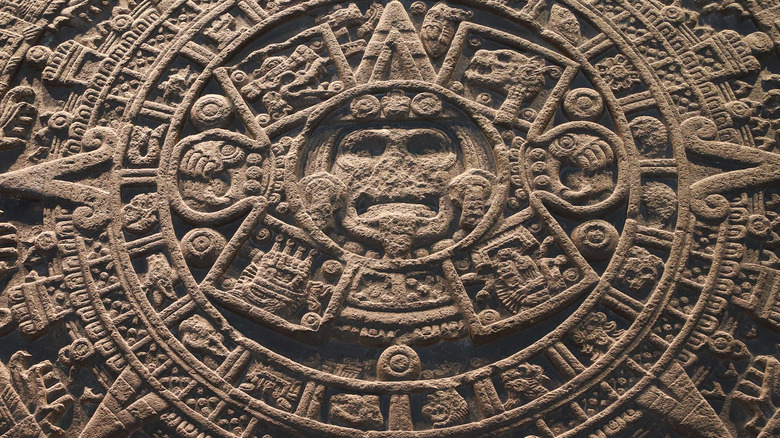Are The Crystal Skulls In Indiana Jones Real?
Any child of the `80s who saw the Indiana Jones movies immediately dreamed of becoming an archaeologist, and with the release of the fourth film in the franchise in 2008, "Indiana Jones and the Kingdom of the Crystal Skull," the magic of the adventurous globe-trotting professor played by Harrison Ford was shared with a whole new generation. The fifth installment in the series is now expected sometime in 2023, according to IMDb, and for this reason, Indiana Jones, in one form or another, will likely capture the imagination of young and old alike for many years to come.
Anyone who knows what archaeology is actually like, however, knows that the Indiana Jones movies aren't very realistic. (Think sitting in the hot sunshine meticulously dusting small shards of pottery, rather than punching Nazis.) The films and TV series do sometimes reference real people, events, and objects, however. One such example is the Aztec crystal skulls from the fourth film. Similar artifacts do exist, but recent investigations have uncovered that, although they aren't as old as many once believed, the real story behind the crystal skulls is a fact that's stranger than fiction.
They're authentic forgeries
According to Discover Magazine, there were carved crystal skulls in the inventory of major museums and institutions all over the world. As recently as the 1990s, they were believed to be genuine ancient artifacts from the Aztec Empire. Skulls figured prominently in Aztec culture, as did works of art reflecting high levels of artisanship. For these reasons, skulls carved from crystal dating from the Aztec Empire seemed plausible to both researchers and academics.
In the '90s, however, anthropologist Jane Walsh of the Smithsonian's National Museum of Natural History grew suspicious about the authenticity of the objects. Confirming her concerns, among other evidence: the proportions were off; the carving was done with tools contemporary to the mid-to-late 19th century, rather than the 14th through 15th century, when the Aztecs ruled much of what is now Mexico (according to World History). Further investigation led Walsh to the name Eugène Boban, a 19th-century fan of Mexican history and self-taught archaeologist.
Turns out that after establishing himself as an "expert" in the field, Boban was able to "authenticate" fake skulls, selling forgeries to museums all over the world. While it's now agreed the crystal skulls aren't real — put it another way, they're real fakes — no one knows for sure how the skulls were carved, or by whom. That part of the mystery, at least, remains to be solved in an Indiana Jones movie of the future.

